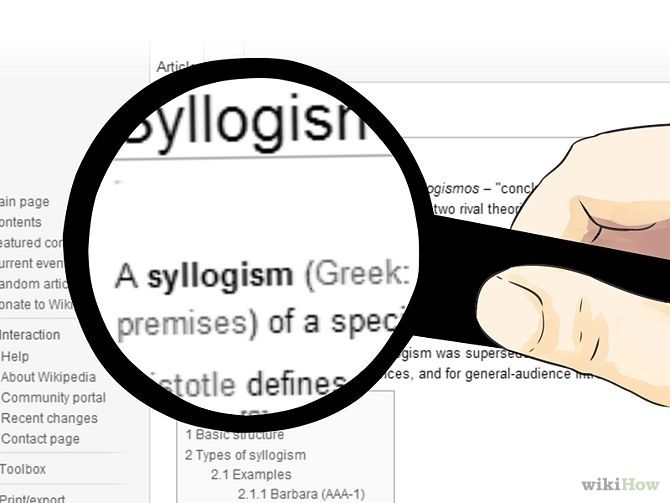Syllogism - a possible question format in future for 11 Plus exams. What is syllogism and how to solve these type of questions? Read more.
The technical definition of Syllogism is
- an instance of a form of reasoning in which a conclusion is drawn from two given or assumed propositions (premises); a common or middle term is present in the two premises but not in the conclusion, which may be invalid (e.g. all dogs are animals; all animals have four legs; therefore all dogs have four legs ).
- deductive reasoning as distinct from induction.
It is a very popular question format for MBA entrance exams worldwide. But while teaching at Champs Learning( 11 plus tuition provider in West London) and interacting with various parents and students, I strongly carry the opinion that this form of question will soon be a part of 11 plus exams for entry into Grammar or Independent schools.
Evaluating an argument to be strong or weak can sometimes prove very tricky. This question type apart from checking your ability to identify a strong argument, checks also your general awareness in subtle ways. The arguments need to be evaluated the context we live in. That is the Indian context. Anything that goes against this system is to be treated as a weak argument.
An argument is strong and logical only if it immediately addresses the issue raised by the question. Sometimes prejudices are dished out as arguments. Prejudices are prejudices, not arguments. A strong arguments need to be firmly based on facts, without bias, precise, and objective. There are at times emotional responses to certain questions. These are weak. A strong argument will not leave any loose ends. In other words it will not require any further explanation to make its point. It is concise and clear. Generally an argument with a strong fact is taken to be strong. However, it is not the fact that makes an argument strong or weak. It is the presentation of that fact. This is especially so in situations where the case itself is weak. In other words a weak fact presented well can be a strong argument, and a strong fact not well presented is a weak argument. If you imagine a courtroom while evaluating an argument it helps. The case may be weak, but as a lawyer you will definitely try to present your case strongly. Sometimes, a strong case is lost because of weak arguments. While evaluating an argument what you need to bear in mind is that a strong argument does not always win the case in the court, but a strong argument will always influence the decision on the question. Hence apart from all that is said above if you are able to decide if the argument can influence the decision on the issue raised by the question, choose it as strong argument. If you think that it cannot influence the decision term it as weak. Each argument is to be evaluated on its own merit, not one in relation to the other. That is why either I or II is filler in this question type. It is not that if one argument is strong, the other will become weak.
Probably True Probably False
In this question type you are required to evaluate the degree of truth and falsity of a given inference. As evidence accumulates, it becomes possible to examine the degree to which the hypothesis derived from such evidence is true or false. We can say how far the hypothesis can be true. This is what happens in all PTPF questions. We examine the data given in the main statements. See the inference (hypothesis) arrived at from the given data and try to establish the degree of Truth and Falsity of it. In the exams after analyzing the data and the inference as above, we are required to choose one of the five options which are: Definitely true/False; Probably True/False; Data Inadequate.
You must examine the degree of Truth and Falsity of an inference systematically; the precondition is that you must understand the data very well. Only then can you understand how far the inference is supported by the data.
The method given below if mastered can give you complete accuracy in this question type. Hence at least in the beginning, stick to the steps described here while solving PTPF questions. Once mastered, you will develop speed in solving questions.
After reading and comprehending the data completely, evaluate the conclusion for definiteness. If you can, mark ‘Definitely True/False’. If you cannot evaluate definiteness, eliminate those options and evaluate data inadequacy, i.e., there is insufficient to data to come to the given conclusion, or is there a logical flaw in the movement form the data to the given conclusion. Choose or eliminate “Data Inadequate’ accordingly. If Data Inadequate is eliminated because there seems to be sufficient data, consider probability. If the chances are fifty per cent or more choose probably true; if the chances are less than fifty per cent, choose probably false.
Cause – Effect
The cause-effect questions are the easiest. What a cause is, and what an effect is, probably needs no explanation. However, a factor that brings about a result is called a cause and the result is its effect. For example, I did not attend the lecture yesterday because I was not well. In this sentence the two events have a cause effect relationship. I was not well is the cause and I did not attend the lecture is the effect. Observe also that the word because joins the two sentences. In sentences in English, what comes immediately after the word because will always be a cause. While solving questions you can see if you can meaningfully join the sentences using because. If you can, it becomes easy to identify the cause.
After reading the two sentences, if you find no relation between them, choose the option corresponding to independent effects. If you suspect a relationship, quickly check the kind of relationship - whether statement A causes B or statement B causes A. At this point, taking the help of because will be useful. Try to read the sentences with because in between. See if it makes sense. In longer sentences you may have to think more carefully. Mark the option that corresponds to the correct relationship between statement A and statement B. Sometimes you suspect a relationship, and when you check with because it does not make any sense either way. Yet you see a relationship. The answer then is probably both the statements are effects of some common cause. What that common cause is, don’t be bothered. Since an event can be a cause only in relationship to its effect , there cannot be a question for which you have to mark ‘independent causes’, this option may be treated a filler.
Courses of Action
Courses of action questions are small case studies. They are easy to score. Usually the format of the question is: a problematic situation/crisis is described in a short paragraph. This is then followed by three numbered courses of action – which are solutions to that problematic situation. The options ask you choose the best combination of the courses of action. While solving these questions, you need to bear two things in mind. First, you need to identify whether each of the given courses of action is a part of your answer. Second, in order to mark your answer correctly, you need to work with the Want to add a caption to this image? Click the Settings icon. options.
A course of action is not a subjective solution to a problem, so that the solution can differ from person to person. A course of action is an administrative step (you assume the role of the administrator) undertaken to immediately tackle the problematic situation. The right course of action should attempt to solve the problem as quickly as possible. At times, the main problem may not be solvable immediately. In such cases the right course of action will attempt to minimize the damages. Once you bear these two points in mind, choosing the right combination that scores becomes easy. Remember that you need to think positively. The steps undertaken should be constructive. It should reflect the responsibility that you have assumed under those circumstances.
Next to remember is the urgency of the situation. The course of action should address the problem with the right degree of importance it deserves. A right course of action is one that immediately acts on the problem. It should be practical and not idealistic. Well known time-tested solutions are practical and need to be accepted. Practicality also means that it should not be too mild or too strong. The next step is to work with the options. The moment you have identified a course of action, eliminate the options that do not contain that particular course of action. Work only with remaining options. This way you can sometimes get the answer very quickly and avoid the confusion arising out of a particular combination.

